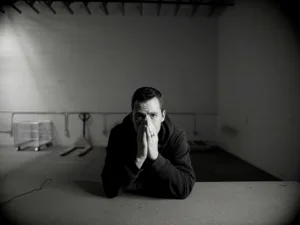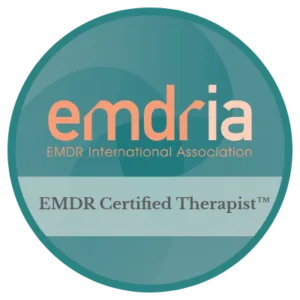What is abuse? What is a healthy relationship? This is what I have learned from being a domestic violence prevention and intervention specialist.
For most individuals, it often feels impossible to navigate relationships, let alone imagine what a healthy relationship might be. At the beginning of my career as a therapist, I worked with clients who were survivors, aggressors, and those in-between domestic violence and intimate partner abuse. In those therapeutic relationships, I found a major lack of healthy relationship education among my clients. Not to mention, this period of my career amplified an awareness that I too was never taught what a healthy relationship is. This by no means was an intrinsic deficit of any of my clients. What constitutes a healthy relationship was neither discussed in their schools or within their families nor role-modeled by their parents. We must seek more for ourselves by developing tools, honoring positive models, teaching that conflict is a part of life, sharing insights about healthy communication, and clearly defining what is domestic violence.
What is Domestic Violence and Intimate Partner Abuse
Intimate partner violence and domestic violence are defined as a pattern of power and control behaviors used in the context of dating and intimate relationships that can take place in any context, not just what is often considered a traditional home. At its core, intimate partner violence is present when one partner uses aggression to gain or maintain power and/or control over another. To truly understand the definition of domestic violence we must step back from thinking of it as physical harm.
Defining Power and Control
Power and control can be exerted in countless ways, the most harmful not necessarily being physical. In most instances of my domestic violence clinical work, my clients would say the physical harm was nothing compared to the emotional and psychological harm inflicted by their abusive partner. Verbal abuse is defined by raised voices, name calling, degrading comments, and the silent treatment. Psychological aggression is demonstrated through one partner disclosing and sharing private information about the other to shame or harm them. It can also be asserting financial control and or forms of restriction, denying, minimizing, or blaming the other for things they are not responsible for. It can show up as intimidation or threatening to harm themselves, others or pets to control their partner. Stalking is not just the traditional following of a partner but also includes social media tracking, the use of GPS and location identification software, and forcing a partner to regularly check in when apart. One can see how insidious power and control can be once we look outside the reductive understanding of domestic violence being only physical. People will heal from physical abuse, but more covert forms of abuse are internalized, traumatizing folks for years after the abuse ends.
Statistics
Based on a national survey conducted in 2010, the National Coalition Against Domestic Violence (NCADV) (n.d.) found that “1 in 3 women and 1 in 4 men have experienced some form of physical violence by an intimate partner” (p. 1). A review of research on intimate partner violence and sexual assault among LGBT people found that 28.7%- 56.9% of LGBT individuals have experienced domestic violence and/or sexual assault within their lifetime (Brown & Herman, 2015, pp. 2-6). These statistics stem from the traditional understanding of domestic violence as being limited to physical forms of power and control, which comprise a range of behaviors from extreme violence to slapping, shoving, and pushing. Now, imagine the staggering statistical range if the data was inclusive of all types of abuse.
Anger Versus Abuse
Abuse is not caused by anger, nor is anger the same thing as abuse. Abuse is a pattern of behavior that is used to control another person. Anger, on the other hand, is a universal emotion that is experienced by everyone. If it is NOT expressed abusively, the healthy expression of anger can lead to positive change and help us establish priorities and boundaries for ourselves and our relationships.
Anger is an emotion that is felt by everyone and often signifies that a situation or interaction is incongruent with one’s values, beliefs, or individual rights. The emotion of anger is not the red flag, it is what we do when we are angry that can be an issue. Anger can be expressed to anyone: our partners, family, friends, coworkers, people we don’t know. Examples of Anger- physical, emotional, and thought responses to stressful or negative situations including increased heart rate, feeling hot, clenched fists, racing thoughts, irrational thinking, jumping to conclusions, raising voices, pacing, and inability to sit still. Everybody feels anger, not everybody is abusive. Abuse at its core is a violation of another’s basic human rights.
Cycle of violence
In 1979, Psychologist Lenore E. Walker mapped out domestic violence and abuse patterns within a “cycle of violence,” which she defined as occurring in three stages: tension building, explosion, and honeymoon. Tension builds when one partner feels like they are walking on eggshells, attempting to prevent abuse, tailoring their identity to meet the needs of an aggressive partner. The explosion is an acute incident where an abusive partner exerts their power through various means: physical, verbal, emotional, sexual, or financial power. This pattern typically leads to a sense of remorse in the abuser and apologies and grand gestures to achieve a sense of the idealized “honeymoon” of the relationship. Tension inevitably begins to build as the off-balanced, idealized, honeymoon persona can be maintained only for a short while. This pattern creates an ongoing cycle of violence that can rapidly cycle throughout a few days or slowly track over weeks or months.
What is a healthy relationship?
Defining a healthy relationship often feels impossible. Sometimes it is easier to look at aspects of healthy relationships rather than give one answer for what one is. Relationships, like people, are individually different. Hopefully, by highlighting healthy components of relationships you can be more empowered to define what is a healthy relationship for you. Often a healthy relationship is described as a safe, secure, loving bond that is built on trust, intimacy, and communication. Healthy relationships can handle life’s ups and downs. They are partnerships based on respect, honesty, and a willingness to communicate and resolve differences.
Healthy Conflict Resolution
Healthy conflict resolution delivers a means-to-an-end outcome, whereas the cycle of violence model continues without true resolution. Healthy conflict resolution peaks and rests on a baseline of respectful homeostasis of a relationship established on mutually agreed-upon concepts, ideals, and values. When a conflict is presented, tension builds between partners signifying difference, misunderstanding, or compromised values. Healthy tension within a conflict will peak as an opportunity for assertive communication and objective evaluation of agreements and responsibility. Tension reduces as the conflict is resolving and signifies de-escalation through clarifying statements, consideration of self and one another, and connecting through empathy. Healthy conflicts help partners develop a deeper understanding of each other’s needs based on repeated positive outcomes of healthy conflicts. Healthy conflict resolution strengthens bonds, increases trust, moves through difference, and grows the relationship forward.
Aspects of healthy relationships
Creating one definition of a healthy relationship seems pejorative and, in a sense, would perpetuate abuse since it would be a false expectation put on a relationship that could not be upheld. I like to think of a healthy relationship as possessing positive traits that are unique or representative of the individuals in the relationship. The ways an individual identifies and maintains a healthy relationship varies drastically and is influenced by culture, community, familial and personal values. Here is a list of a few more general traits of healthy relationships I like to look for when working with my clients.
Trust
The firm belief that another can be relied upon. Trust can also be seen as a person’s willingness to accept (and/or increase) their vulnerability by relying on the word of their partner, accepting uncertainty.
Intimacy
Intimacy is not purely physical. It is the act of connecting with someone through vulnerability and safely sharing one’s honest emotions, ideas, activities, and physical closeness.
Assertive Communication
Assertive communication is a direct, honest, and appropriate expression of one’s personal view thought or opinion that also includes empathy and consideration of the other person.
Respectful Boundaries
Are limits and rules created to mutually establish what is ok, acceptable, and safe for how partners behave toward and treat each other. Likewise, boundaries declare reasonable responses when one violates the established boundary.
Autonomy
The ability to be in a relationship with another person while retaining the capacity to maintain one’s own personhood such as personal decision making, pursuing personal interests, hold a personal perspective.
If you feel as though your current relationship needs support or your relationship tendencies could use some examination, I’m here to help. I am passionate about addressing the impact of abuse and hostility has on one’s personal mental health. I also know how important it is to provide an empathic, welcoming, and structured environment for clients finding themselves exerting power and control over others and who want to change.
References
Brown, T. N. T., & Herman, J. L. (2015, November). Intimate partner violence and sexual abuse among LGBT people: A review of existing research. Retrieved from The Williams Institute, UCLA School of Law website: https://williamsinstitute.law.ucla.edu/wp-content
/uploads/Intimate-Partner-Violence-and-Sexual-Abuse-among-LGBT-People.pdf
National Coalition Against Domestic Violence. (n.d.). Domestic violence. Retrieved from https://www.speakcdn.com/assets/2497/domestic_violence2.pdf
Walker, L. E. (1987). The battered woman. New York, NY: Harper.














